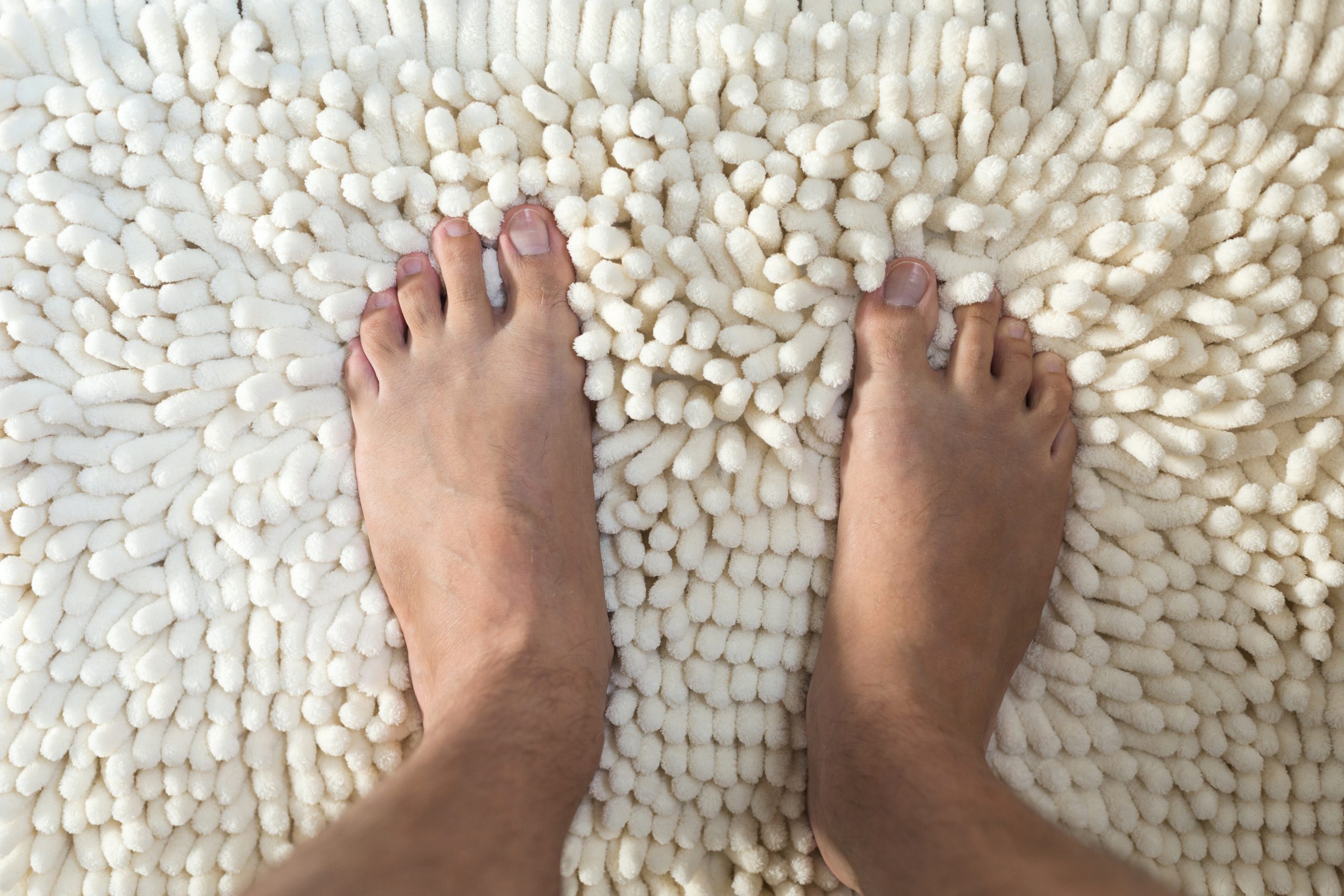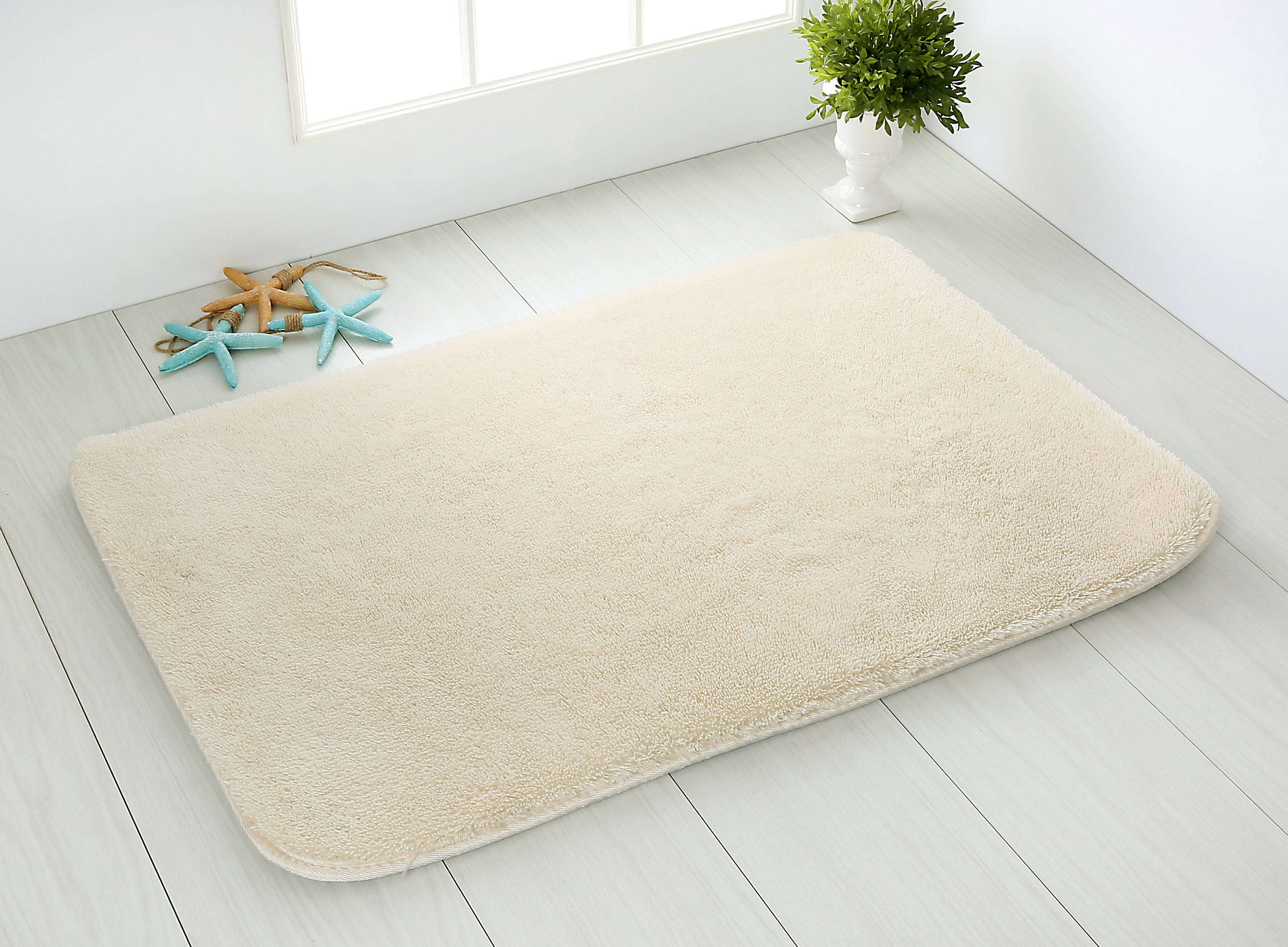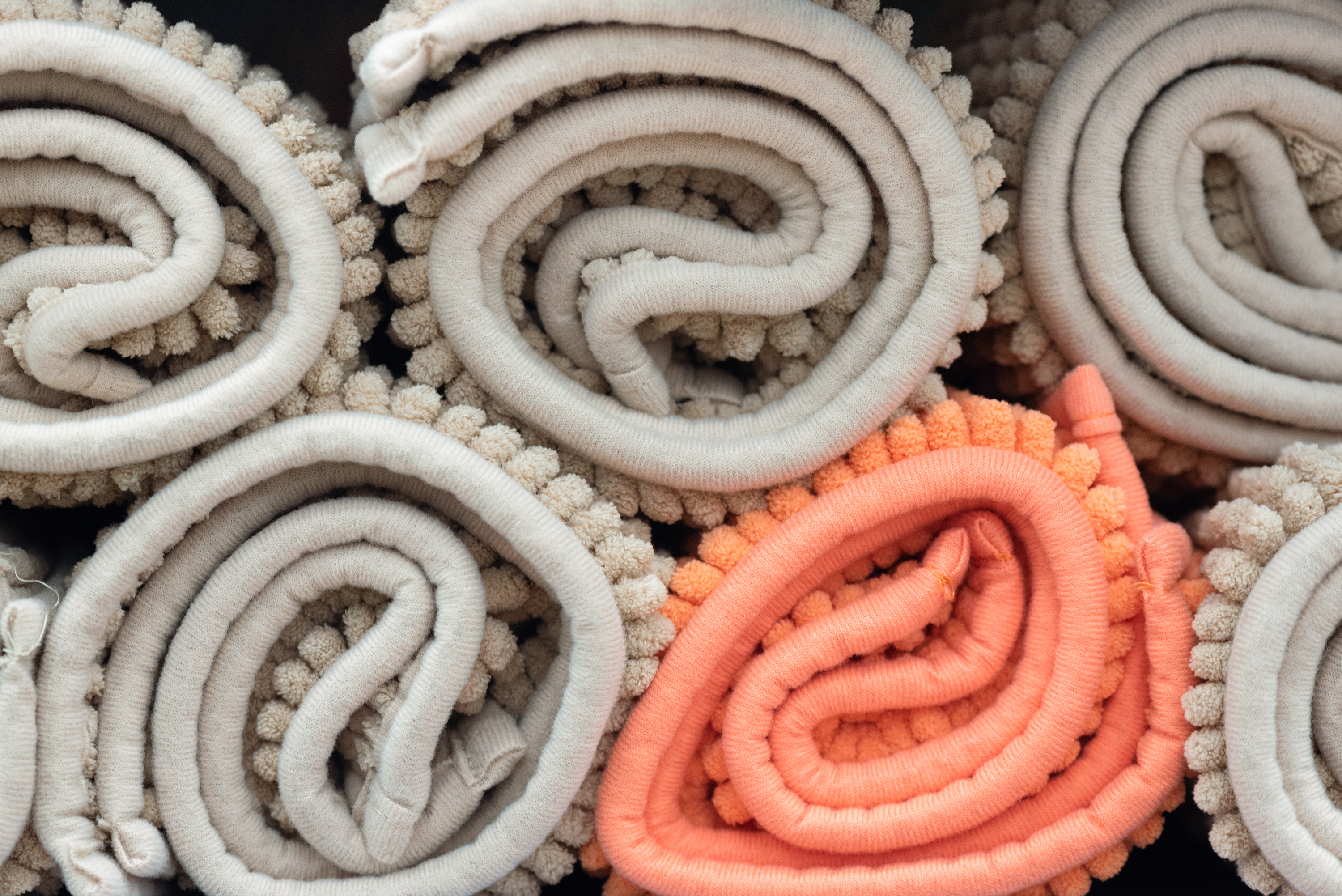How to Wash Bath Mats and Rugs
The products and services mentioned below were selected independent of sales and advertising. However, Simplemost may receive a small commission from the purchase of any products or services through an affiliate link to the retailer's website.
You might be surprised to hear that it’s recommended bath mats be washed weekly. Since they are designed to absorb moisture, they can be a potential hotbed for bacteria, especially in warmer climates where it’s more difficult for a mat to completely dry out between use. If you live in a dry climate, you can probably push it to every two weeks, as long as you don’t see or smell signs of mildew.
How To Clean Your Bath Mat
The quickest and easiest way to launder a fabric mat or rug is by tossing it in the washing machine. Check the item’s care instructions first. Some might recommend hand washing. (More on that in a minute.)
First, gently lift the corners of your bath mat and carry it outside to shake out excess debris. The last thing you want is dirt, dust and debris to be clogging up your drains. Next, hit stubborn spots with a stain remover. This would be anywhere some lotion might have spilled or if a coffee splotch ended up on your mat.
If you’re using a washing machine, make sure not to pack the rug into an already full load. There should be plenty of room for it to tumble around. Use a cold water cycle and a gentle detergent. Since most bath mats are colored, hot water can cause the dyes to bleed or fade. If the mat is made entirely of cotton without a rubber backing, it might do just fine in the dryer on low. Any mats with non-slip grips should be hung to dry; even the best bath mats can end up having their grips melted by the dryer.
If you don’t have a washing machine at home or your bath rug is delicate, you can clean it by hand. Hand washing takes extra effort but yields great results. Shake the rug outside to remove debris and then pretreat with stain remover if necessary. Then fill your bathtub with warm water and add a teaspoon of mild detergent. Submerge the mat and let it soak for 15 minutes. Then slosh it around with your hands. Drain the tub and rinse the mat with clean, cold water. This will help remove the soap and residue. Wring it out and hang it to dry on a clothesline or lay it flat on top of your drying rack.
If you live in a humid climate, or your bath mat gets hit frequently with multiple back-to-back showers, hanging it up will help it dry faster. Try a drying rack, over the edge of the tub or on a wall hook.
Plastic, wood and bamboo mats require a different tactic. For plastic, spray it with disinfectant cleaner and wipe it down to dry. Wooden mats can withstand a vinegar-based or natural product as a cleaner. Be sure to wash the front, sides and back since mold and mildew can grow anywhere; let it air dry.
Signs You Need A New Bath Mat
Even the best bath mats need to be replaced regularly. Experts recommend replacing bath mats when their rubber backing starts to disintegrate or approximately every two years because they are subject to great wear and tear.
Think about how satisfied you’ll feel the next morning when you step onto a nice, dry, fluffy bath mat!





